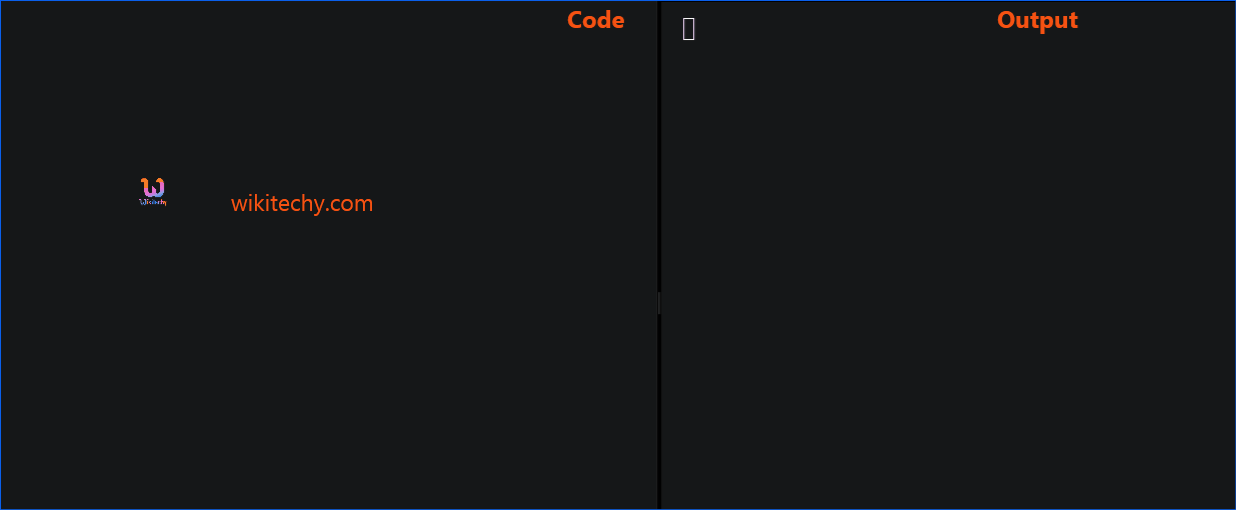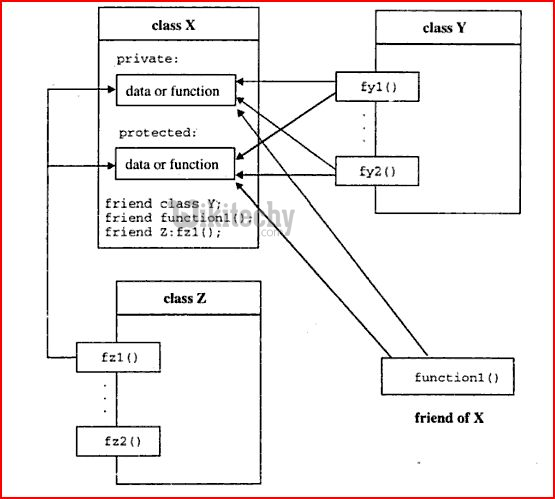C++ Friend Function | C++ friend Function and friend Classes - Learn C++ - C++ Tutorial - C++ programming

Learn c++ - c++ tutorial - c++-friend-function - c++ examples - c++ programs
Why We Use Friend Function in C++
- One of the important concepts of OOP is data hiding, i.e., a nonmember function cannot access an object's private or protected data.
- But, sometimes this restriction may force programmer to write long and complex codes. So, there is mechanism built in C++ programming to access private or protected data from non-member functions.
- This is done using a friend function or/and a friend class
Learn C++ , C++ Tutorial , C++ programming - C++ Language -Cplusplus
Friend Function in C++
- If a function is defined as a friend function then, the private and protected data of a class can be accessed using the function.
- The complier knows a given function is a friend function by the use of the keyword friend.
- For accessing the data, the declaration of a friend function should be made inside the body of the class (can be anywhere inside class either in private or public section) starting with keyword friend.

learn c++ tutorials - friend function in c++ Example
Declaration of friend function in C++
class class_name
{
... .. ...
friend return_type function_name(argument/s);
... .. ...
}
- Now, you can define the friend function as a normal function to access the data of the class. No friend keyword is used in the definition.
class className
{
... .. ...
friend return_type functionName(argument/s);
... .. ...
}
return_type functionName(argument/s)
{
... .. ...
// Private and protected data of className can be accessed from
// this function because it is a friend function of className.
... .. ...
}Learn C++ , C++ Tutorial , C++ programming - C++ Language -Cplusplus
Example 1: Working of friend Function
/* C++ program to demonstrate the working of friend function.*/
#include <iostream>
using namespace std;
class Distance
{
private:
int meter;
public:
Distance(): meter(0) { }
//friend function
friend int addFive(Distance);
};
// friend function definition
int addFive(Distance d)
{
//accessing private data from non-member function
d.meter += 5;
return d.meter;
}
int main()
{
Distance D;
cout<<"Distance: "<< addFive(D);
return 0;
}
Output
Distance: 5
- Here, friend function addFive() is declared inside Distance class. So, the private datameter can be accessed from this function.
- Though this example gives you an idea about the concept of a friend function, it doesn't give show you any meaningful use.
- A more meaningful use would to when you need to operate on objects of two different classes. That's when the friend function can be very helpful.
- You can definitely operate on two objects of different classes without using the friend function but the program will be long, complex and hard to understand.
Learn C++ , C++ Tutorial , C++ programming - C++ Language -Cplusplus
Example 2: Addition of members of two different classes using friend Function
#include <iostream>
using namespace std;
// forward declaration
class B;
class A {
private:
int numA;
public:
A(): numA(12) { }
// friend function declaration
friend int add(A, B);
};
class B {
private:
int numB;
public:
B(): numB(1) { }
// friend function declaration
friend int add(A , B);
};
// Function add() is the friend function of classes A and B
// that accesses the member variables numA and numB
int add(A objectA, B objectB)
{
return (objectA.numA + objectB.numB);
}
int main()
{
A objectA;
B objectB;
cout<<"Sum: "<< add(objectA, objectB);
return 0;
}
Output
Sum: 13
- In this program, classes A and B have declared add() as a friend function. Thus, this function can access private data of both class.
- Here, add() function adds the private data numA and numB of two objects objectA andobjectB, and returns it to the main function.
- To make this program work properly, a forward declaration of a class class B should be made as shown in the above example.
- This is because class B is referenced within the class A using code: friend int add(A , B);.
Friend Class in C++ Programming
- Similarly, like a friend function, a class can also be made a friend of another class using keyword friend. For example:
... .. ...
class B;
class A
{
// class B is a friend class of class A
friend class B;
... .. ...
}
class B
{
... .. ...
}
- When a class is made a friend class, all the member functions of that class becomes friend functions.
- In this program, all member functions of class B will be friend functions of class A.
- Thus, any member function of class B can access the private and protected data of class A.
- But, member functions of class A cannot access the data of class B.
- Remember, friend relation in C++ is only granted, not taken.
